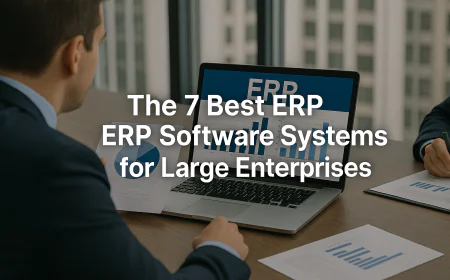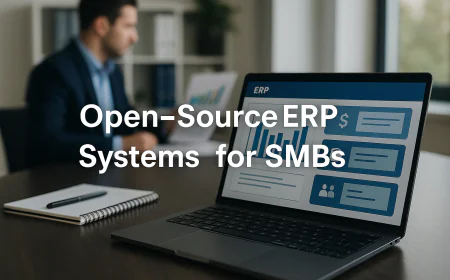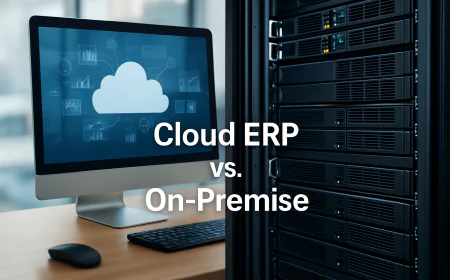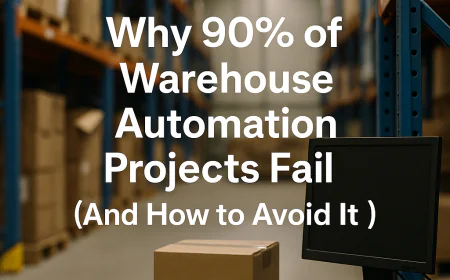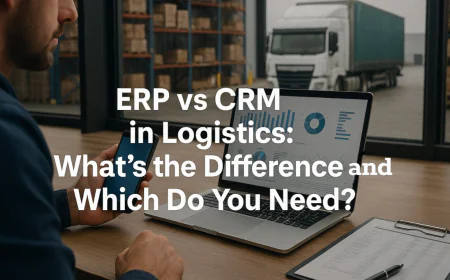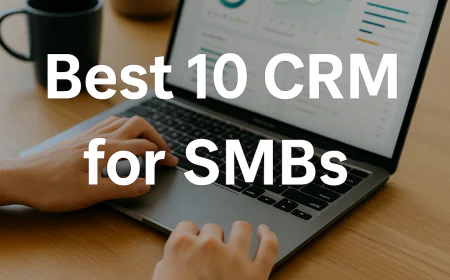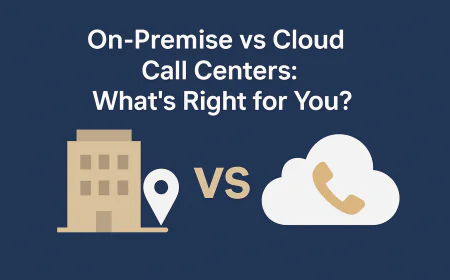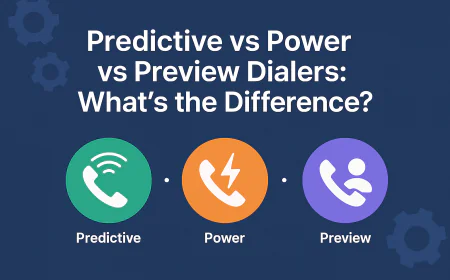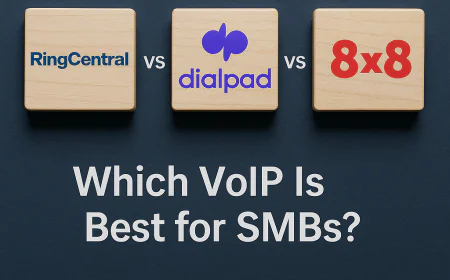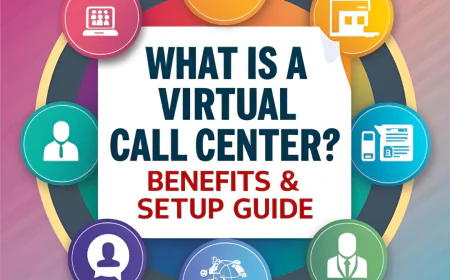7 Best VoIP Providers for Small Businesses
Compare the best VoIP providers for small businesses. Explore pricing, features, and ease of use to find the ideal fit for your SMB’s communication needs.
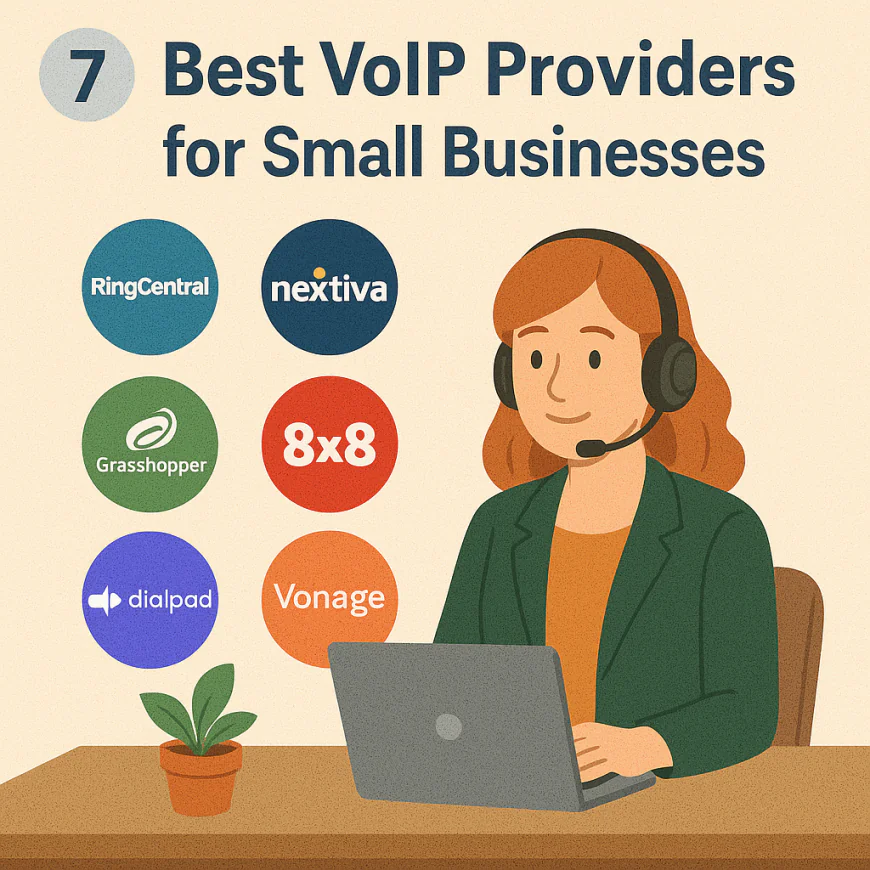
Table of Contents
- 1️⃣ What Is a VoIP Provider (and Why It Matters for SMBs)?
- 2️⃣ How We Choose the Best VoIP Providers for Small Businesses
- 3️⃣ What to Look For in a VoIP Provider (Key Buying Criteria)
- 4️⃣ Top 7 VoIP Providers for Small Businesses (Ranked)
- 5️⃣ How to Set Up VoIP for a Small Business (Step-by-Step)
- 6️⃣ Common Mistakes to Avoid When Choosing VoIP for Business
- 7️⃣ VoIP Security Best Practices for Small Businesses
- 8️⃣ Final Checklist — Is VoIP Right for Your Business?
- 🔄 Want to Conclude More? Try These
-
1️⃣ What Is a VoIP Provider (and Why It Matters for SMBs)?
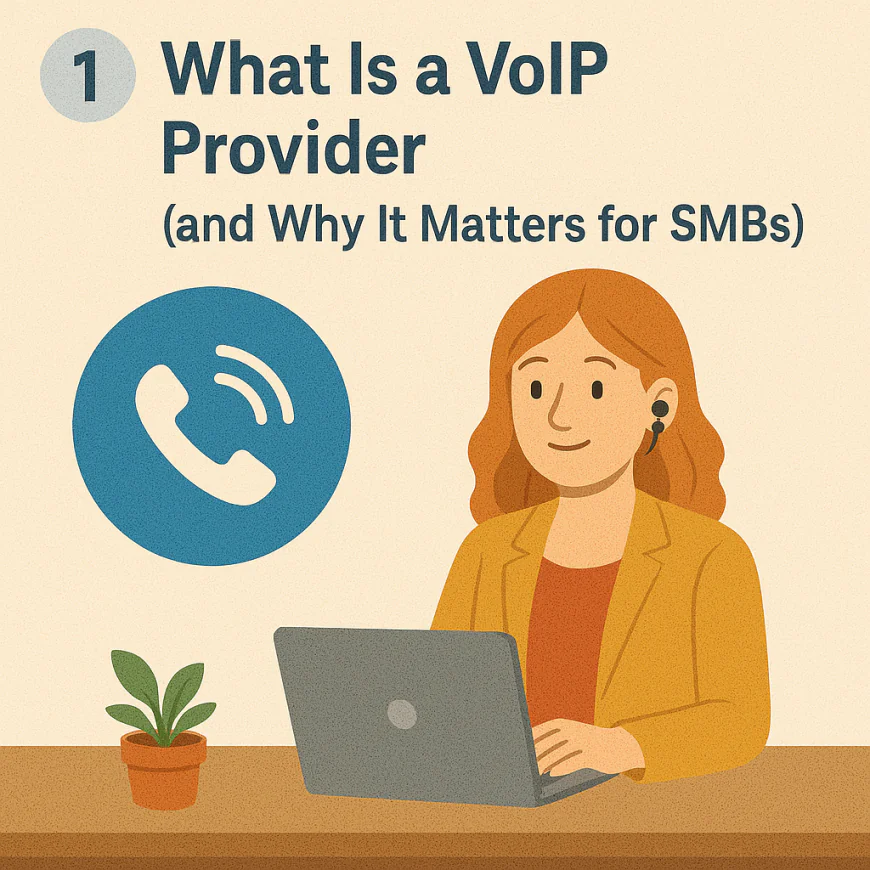
📌 What exactly is a VoIP provider?
A VoIP (Voice over Internet Protocol) provider delivers voice calling services over the internet instead of traditional phone lines. Unlike landline carriers that rely on copper wires and circuit switching, VoIP transmits voice data in real-time using IP networks.
These providers offer business phone systems that typically include:
-
Local and toll-free business numbers
-
Call routing, IVR (Interactive Voice Response), and voicemail
-
Team collaboration tools (extensions, transfers, conference calls)
-
Softphones (apps on desktop/mobile) or IP desk phone support
-
API access for custom integrations
Some VoIP providers are UCaaS platforms (like RingCentral) offering video, chat, and fax in one package. Others focus purely on call center and sales support (like JustCall or Aircall).
🧩 How is VoIP different from landlines or mobile providers?
-
Landline systems require expensive hardware, physical office lines, and often onsite PBX systems.
-
Mobile carriers are designed for individual use — not scalable business communication.
-
VoIP replaces both with cloud-based tools, eliminating hardware and letting you work from anywhere.
Instead of dialing out from an on-premise phone, your agents can use a browser tab, mobile app, or desktop softphone to place and receive calls globally — often with better tracking, analytics, and integrations than legacy systems ever offered.
💡 Why are VoIP providers ideal for SMBs?
Small businesses choose VoIP because it offers:
-
Lower startup and monthly costs — no complex infrastructure needed
-
Remote work flexibility — employees can work from home or hybrid
-
CRM and helpdesk integrations — ideal for sales and support
-
Instant scalability — add or remove numbers/users in seconds
-
Advanced features — like call analytics, whisper coaching, and auto-dialers
And because many VoIP providers are priced by the seat, you can pay as you grow — perfect for small teams.
🔍 What are the must-have VoIP features for small businesses?
When evaluating a VoIP provider, SMBs should prioritize these core features:
-
Unlimited or low-cost calling (especially to target regions)
-
Custom greetings and IVR menus to route callers easily
-
Call recording and monitoring for training and QA
-
Desktop + mobile apps for remote teams
-
Call analytics and performance dashboards
-
CRM integrations with tools like HubSpot, Zoho, Salesforce
-
Porting of existing phone numbers
-
24/7 support (or at least during business hours)
Providers like Aircall and Nextiva are particularly strong in offering all of the above.
🧠 What types of VoIP providers exist?
VoIP providers fall into several categories:
-
General-purpose VoIP for business (e.g., Nextiva, RingCentral)
-
Call center-focused VoIP (e.g., Aircall, JustCall, CloudTalk)
-
CRM-integrated VoIP (e.g., Zoho Voice)
-
Budget/entry-level VoIP (e.g., Grasshopper, Google Voice for Business)
-
VoIP resellers or white-label systems for MSPs
Choosing the right one depends on your use case, existing tools, and whether you're support- or sales-driven.
-
-
2️⃣ How We Choose the Best VoIP Providers for Small Businesses
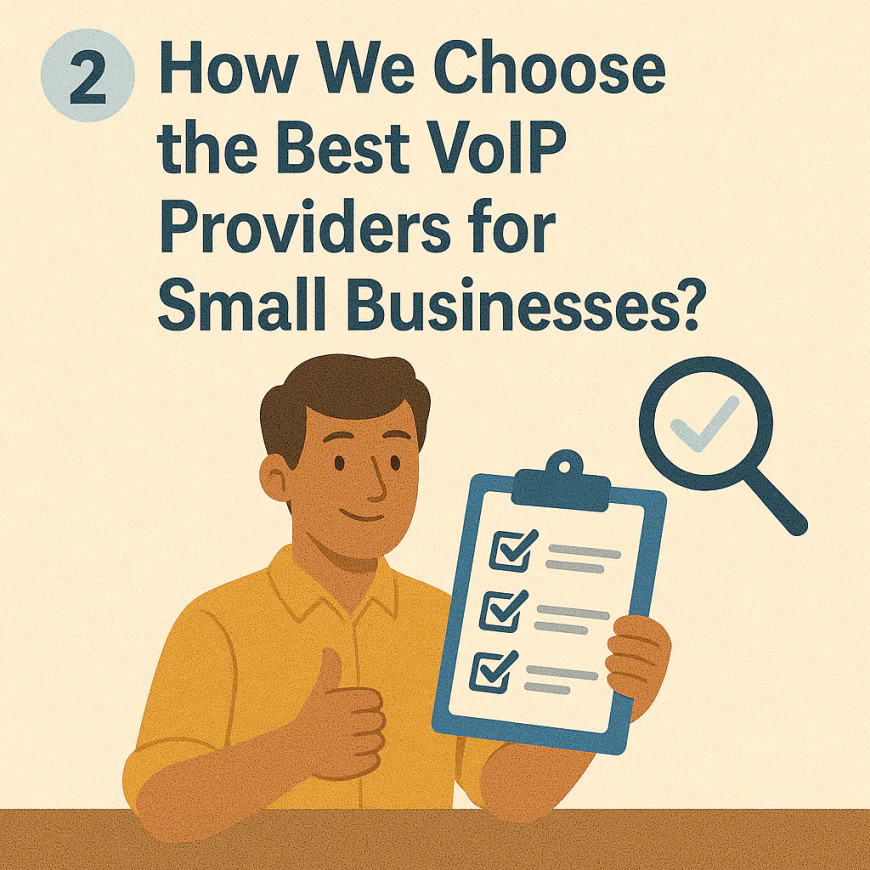
🔍 What criteria matter most when choosing a VoIP system for an SMB?
When evaluating VoIP providers for small businesses, the goal isn’t just to find the cheapest tool — it’s to find one that combines scalability, support, ease of use, and integrations with your workflows. Here are the most critical criteria we used:
-
Ease of setup — Can a small team go live in hours, without needing IT?
-
Pricing clarity — Transparent, predictable, per-user pricing with no hidden fees.
-
Call quality — Minimal jitter, latency, or dropped calls across geographies.
-
CRM and helpdesk integrations — Especially with HubSpot, Zoho, Salesforce, and others.
-
Remote-readiness — Mobile apps, browser-based softphones, remote-friendly routing.
-
Customer support — 24/7 live support, onboarding help, and knowledgebase access.
-
Scalability — Can the platform grow from 3 to 300 agents without migrations?
-
Security and reliability — Encryption, failover support, SOC 2 compliance, uptime SLA.
We heavily weighted tools that make life easier for small, non-technical teams.
🧪 How did we evaluate performance and reliability?
We considered real-world benchmarks like:
-
Uptime guarantees (most top tools offer 99.99% SLA)
-
VoIP quality features like QoS, jitter buffers, and regional servers
-
Call setup speed and audio clarity on both local and international calls
-
Performance over standard broadband — not just fiber or enterprise networks
-
Redundancy support — failover routing, call forwarding, and mobile backup
Platforms like Dialpad and CloudTalk stood out for real-time AI-powered call optimization and global call quality.
💬 Where did we source real user feedback?
We analyzed thousands of verified reviews across platforms like:
-
G2
-
Capterra
-
Trustpilot
-
Reddit threads and r/VoIP
-
Independent user videos and YouTube demos
This allowed us to identify consistent praise patterns (e.g., “super easy to train new reps”) and recurring complaints (e.g., “support is slow on weekends”).
📈 Why focus only on SMB-optimized tools?
Enterprise platforms often come loaded with features SMBs don’t need — and pricing that doesn’t make sense for 5–50 seat teams.
So we excluded:
-
Tools requiring minimum seats of 50+
-
Platforms with complex IT/network setup
-
Systems that charge extra for basics like IVR or call recording
Instead, we focused only on providers that:
-
Can onboard small teams fast
-
Offer competitive pricing under $75/user/month
-
Don’t require infrastructure investments
-
Work smoothly out of the box
🧠 What use cases did we prioritize?
To reflect the real-world needs of small businesses, we tested and researched use cases such as:
-
Inbound support teams using ticketing and CRM
-
Outbound sales reps using autodialers and SMS
-
Remote teams with mobile or browser calling
-
Hybrid contact centers combining phone + chat
-
Solo founders or microteams needing simple but professional call handling
Each tool selected is tailored to one or more of these high-priority SMB workflows.
🔎 How were pricing and long-term value factored?
We didn’t just compare monthly pricing. We also calculated:
-
Year-one costs with onboarding + hardware
-
Third-party costs (e.g., separate CRM integrations or SMS add-ons)
-
Scalability pricing — does it spike as you add users?
-
Hidden costs — like needing enterprise plans for basic analytics
Tools like Zoho Voice and Freshdesk Contact Center delivered standout value for bootstrapped teams, while Aircall offered superior balance of price vs features for scaling SMBs.
-
-
3️⃣ What to Look For in a VoIP Provider (Key Buying Criteria)
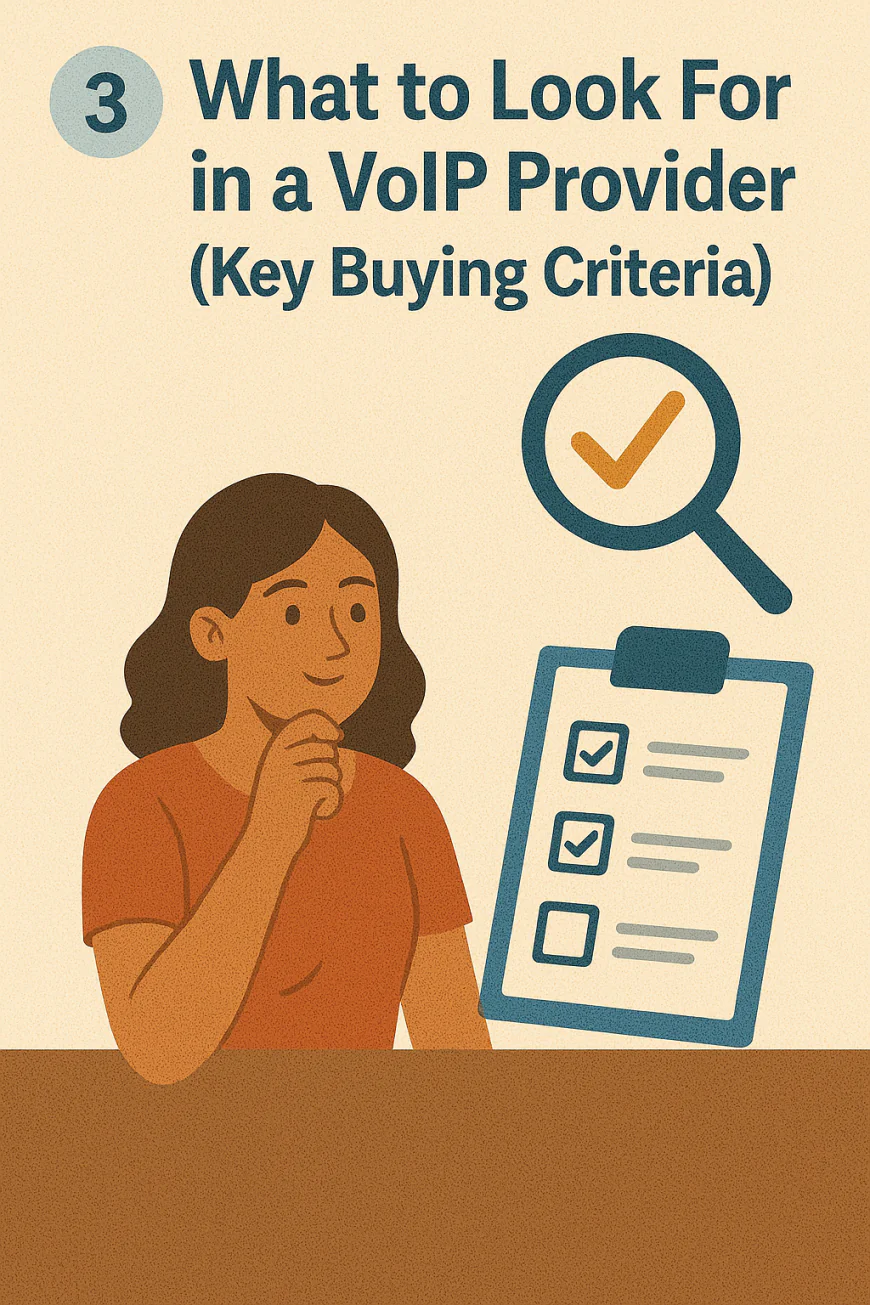
📦 1. Does it offer all the core VoIP features out of the box?
For small businesses, especially call centers, the essentials must be built in — not hidden behind enterprise-only tiers. At minimum, your provider should include:
-
Unlimited calling (U.S. + international options)
-
Call recording
-
IVR/auto-attendant
-
Call queuing and routing
-
Voicemail-to-email
-
Call analytics and dashboards
-
Mobile app + browser softphone
-
Call forwarding and failover
These features let you operate like an enterprise without the IT overhead.
🧩 2. How well does it integrate with your other tools?
Seamless integrations reduce manual work and help agents stay in flow. A modern VoIP solution should integrate natively (not just via Zapier) with tools like:
-
CRMs – HubSpot, Salesforce, Zoho CRM, Pipedrive
-
Helpdesks – Zendesk, Freshdesk, Zoho Desk
-
Marketing – Mailchimp, Intercom, ActiveCampaign
-
Collaboration tools – Slack, Microsoft Teams
Bonus points if it auto-logs calls, syncs notes, or pops up customer data before the call connects.
⚙️ 3. Is it easy to set up — even without IT?
SMBs need fast deployment. The right VoIP provider should:
-
Let you set up new users in minutes
-
Offer a no-hardware-needed option (softphone + browser dialer)
-
Guide you through porting numbers with no downtime
-
Include drag-and-drop call flow builders or visual IVR tools
-
Offer live onboarding help or tutorials
Solutions like Aircall and JustCall stand out for SMB-friendly onboarding.
💰 4. Is the pricing transparent, scalable, and affordable?
Avoid tools that:
-
Hide key features behind “contact sales” enterprise plans
-
Charge extra for integrations or call recording
-
Force long-term contracts
Instead, prioritize providers with:
-
Clear per-user/month pricing (under $75 is standard for SMBs)
-
Volume discounts as your team grows
-
Free trials or money-back guarantees
-
No setup fees
Example benchmarks:
-
Freshdesk Contact Center – starts at $15/user/month
-
Zoho Voice – approx. $18/user/month for bundled call + CRM
-
Aircall – from $30/user/month with robust CRM support
🌐 5. How reliable is the service and network uptime?
For mission-critical operations, downtime isn’t an option. Look for providers that:
-
Publicly list their uptime (99.99% or higher is ideal)
-
Have data centers or points of presence (PoPs) in your country/region
-
Offer call failover to mobile or alternate lines
-
Support SD-WAN and QoS for optimized voice traffic
-
Use modern codecs like Opus for bandwidth efficiency
Always ask: “What happens if my internet goes down — do calls fail gracefully?”
🧠 6. Is support fast, human, and available 24/7?
When you run into an issue — or need to add an agent fast — real-time support can make or break your operations. Key things to look for:
-
Live chat + phone support, not just ticketing
-
24/7 availability, especially if you have global customers
-
Knowledge base + onboarding guides
-
Dedicated success manager (for teams of 10+)
User feedback consistently praises providers like Nextiva and CloudTalk for outstanding support responsiveness.
-
-
4️⃣ Top 7 VoIP Providers for Small Businesses (Ranked)
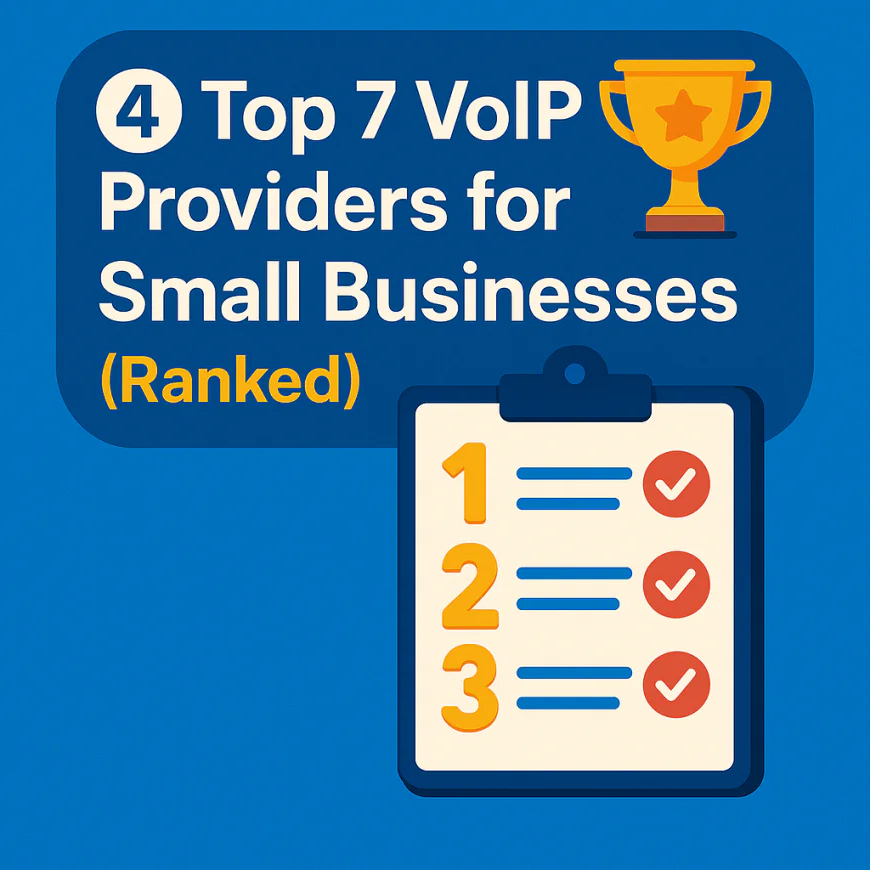
Below are the 7 best VoIP solutions for SMBs — ranked and reviewed with real use cases, pricing clarity, and direct links to help you choose confidently. Each provider is included based on usability, feature set, pricing, support, and real-world SMB feedback.
✅ 1. Aircall – Best All-Around for SMB Call Centers
Why It Stands Out: Lightning-fast setup, clean UI, native CRM integrations, and 100% SMB-focused.
Top Features:
-
Native integrations: HubSpot, Salesforce, Pipedrive
-
Drag-and-drop IVR builder
-
Shared call inbox + call tagging
-
Real-time call monitoring and analytics
-
Global numbers in 100+ countries
Pricing: From $30/user/month
Who It’s Best For: Sales and support teams under 100 agents that need a no-bloat, all-in-one VoIP solution.
✅ 2. Nextiva – Best Support + All-in-One UCaaS
Why It Stands Out: Combines VoIP, CRM, video, and helpdesk with 24/7 US-based support.
Top Features:
-
Built-in CRM and customer journey analytics
-
Call pop + contact sync
-
Workflow automation and voicemail transcription
-
Unlimited voice + video conferencing
-
Excellent onboarding for non-tech teams
Pricing: From $50/user/month
Who It’s Best For: SMBs wanting a complete communications suite, not just VoIP.
✅ 3. Zoho Voice + Zoho Desk – Best Budget Ecosystem
Why It Stands Out: CRM, helpdesk, and VoIP in one tightly integrated platform — all for under $20/user.
Top Features:
-
Native Zoho CRM and Desk integration
-
Auto ticket creation from calls
-
Pay-as-you-go pricing model
-
Smart call routing + IVR
-
Easy browser dialer and mobile apps
Pricing: Starts around $18/user/month
Who It’s Best For: Bootstrapped SMBs already using Zoho tools.
✅ 4. JustCall – Best for Sales-Focused Call Centers
Why It Stands Out: Fast dialer, SMS automation, CRM integrations, and great UI.
Top Features:
-
Power dialer and click-to-call
-
SMS workflows + bulk texting
-
Auto-logging in CRMs like HubSpot and Pipedrive
-
Live agent coaching tools
-
Call scorecards for performance review
Pricing: From $25/user/month
Who It’s Best For: SMB sales teams making hundreds of outbound calls daily.
✅ 5. Freshdesk Contact Center – Best Plug-and-Play VoIP
Why It Stands Out: Fastest to set up, low cost, perfect for under-50 agent teams.
Top Features:
-
AI-powered call routing
-
Integrated with Freshdesk and Freshsales
-
No hardware needed
-
Browser-based softphone
-
Usage-based pricing
Pricing: From $15/user/month
Who It’s Best For: Small support teams needing a reliable system fast.
🔗 Visit Freshdesk Contact Center
✅ 6. CloudTalk – Best for International VoIP
Why It Stands Out: 160+ international numbers, real-time analytics, and remote-friendly.
Top Features:
-
Advanced call routing with ACD
-
160+ countries supported
-
Real-time analytics dashboard
-
Call tagging, notes, and recording
-
VoIP softphone for mobile and desktop
Pricing: From $25/user/month
Who It’s Best For: Global SMBs with international agents or customers.
✅ 7. Dialpad AI Voice – Best AI Features for SMBs
Why It Stands Out: Real-time call transcription, sentiment analysis, and AI coaching.
Top Features:
-
Live transcriptions and summaries
-
Smart voicemail with transcription
-
Google Workspace and Microsoft 365 integration
-
Real-time coaching for agents
-
Works across devices seamlessly
Pricing: From $60/user/month
Who It’s Best For: SMBs that want AI-powered productivity without complexity.
-
-
5️⃣ How to Set Up VoIP for a Small Business (Step-by-Step)
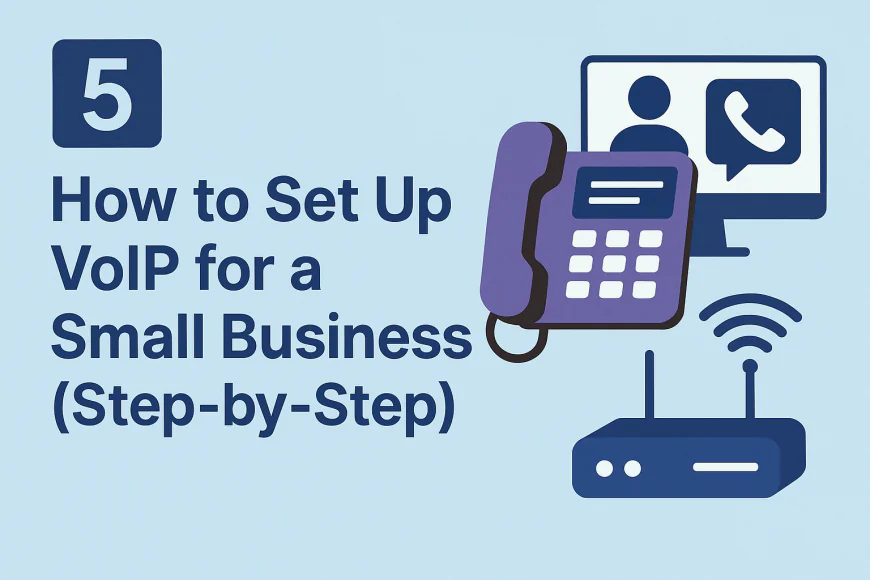
Thinking about switching to VoIP but don’t know where to start? This section walks you through every step of setting up a VoIP system tailored for small businesses — whether you're a two-person startup or a 20-agent call center. No fluff, just actionable setup guidance.
✅ Step 1: Assess Your Call Volume, Team Size, and Goals
Before diving into providers or hardware, define:
-
Call volume (inbound, outbound, blended)
-
Team size and whether they’re in-office, remote, or hybrid
-
Primary goals — lower cost, better CRM integration, remote access, etc.
-
Expected growth — will your team scale in 6–12 months?
These decisions impact the kind of VoIP system, pricing plan, and features you’ll need.
✅ Step 2: Ensure Reliable Internet Connection
VoIP runs over the internet, so stability is mission-critical.
-
Minimum speeds: 1 Mbps up/down per concurrent call (ideally more)
-
Wired Ethernet is preferred for call stability
-
Separate VoIP VLAN (virtual LAN) recommended for call quality
-
Use Quality of Service (QoS) settings on your router to prioritize voice packets
-
Consider SD-WAN if running remote or multi-location centers
Test your connection with tools like VoIP Spear or PingPlotter.
✅ Step 3: Choose the Right VoIP Provider
Pick a provider that fits your needs — support, budget, integrations, and scalability.
🔍 Based on earlier rankings:
-
Best for fast setup & ease of use: Aircall
-
Best all-in-one suite: Nextiva
-
Best low-budget option: Zoho Voice
-
Best for sales teams: JustCall
Match their features to your step 1 goals.
✅ Step 4: Pick Hardware or Go 100% Softphone
VoIP doesn’t require desk phones. Decide between:
-
Softphones: Apps like Aircall, Dialpad, or Zoho Voice on your browser or mobile
-
Desk phones: SIP-compatible hardware (like Polycom, Cisco, Yealink)
-
Headsets: For call clarity, use noise-canceling wired headsets (Jabra, Logitech, Sennheiser)
Many SMBs go 100% softphone to reduce upfront hardware costs.
✅ Step 5: Set Up Numbers, IVRs, and Routing
Once signed up:
-
Buy phone numbers (local, toll-free, or international) from your VoIP dashboard
-
Set up IVR/auto-attendant: Route callers to the right department or agent
-
Create call flows — voicemail, working hours, call forwarding
-
Test routing logic before going live
Tools like Aircall and CloudTalk have drag-and-drop IVR builders for fast setup.
✅ Step 6: Train Your Team
Train your staff on:
-
Using the VoIP app/interface
-
Call handling best practices
-
Logging notes, tagging calls, or integrating with your CRM
-
Troubleshooting issues like echo or dropped calls
Most top-tier providers offer onboarding and training resources — use them.
✅ Step 7: Monitor, Optimize, and Scale
Once live:
-
Use call analytics to monitor agent performance and call volume
-
Regularly review call recordings for QA
-
Adjust IVR or workflows as needed
-
Upgrade plans as your business grows
VoIP systems scale with you — no new wiring or telco visits needed.
-
-
6️⃣ Common Mistakes to Avoid When Choosing VoIP for Business
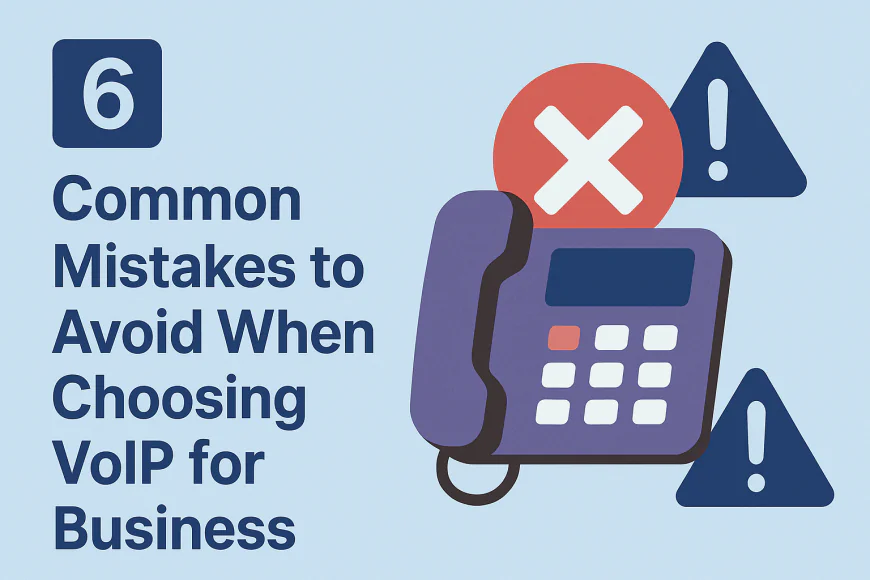
Choosing the wrong VoIP provider or rushing implementation can cripple your call quality, waste budget, or leave your team frustrated. In this section, we’ll cover the most frequent and costly mistakes businesses make when switching to VoIP — and how to avoid them with confidence.
❌ Mistake 1: Choosing a Consumer-Grade VoIP Tool for Business Use
Using tools like Skype or WhatsApp for business calling is a critical error. These tools aren’t designed for:
-
Multi-user call management
-
CRM integration or call logging
-
Business hours, voicemail routing, or call recording
-
Compliance and analytics reporting
✅ Instead, choose business-grade VoIP like Aircall, Nextiva, or CloudTalk.
❌ Mistake 2: Underestimating Internet & Network Requirements
Many small businesses assume any internet connection will do — big mistake. VoIP is only as good as your network.
-
Unstable connections cause jitter, echo, and call drops
-
Shared Wi-Fi can ruin call quality during peak use
-
No QoS = your video streaming competes with customer calls
✅ Invest in business fiber, use Ethernet over Wi-Fi, and configure QoS on your router.
❌ Mistake 3: Ignoring CRM and Tool Integration Needs
If your VoIP system doesn’t integrate with your CRM or helpdesk, your agents will waste time switching tabs and manually logging data.
✅ Choose a provider that offers native or Zapier-based integrations with:
-
Salesforce, HubSpot, Zoho CRM, or Pipedrive
-
Zendesk, Freshdesk, or Intercom
-
Slack, Microsoft Teams, or Gmail
Example: JustCall has 100+ built-in integrations — ideal for sales and support teams.
❌ Mistake 4: Not Planning for Remote or Hybrid Teams
VoIP shines in distributed setups — but only if you plan for it.
-
Failing to test softphones or VPN performance
-
No remote onboarding playbook
-
Using desk phones for WFH agents (which don’t travel well)
✅ Instead, opt for browser-based VoIP tools like Aircall or Dialpad, and provide quality headsets and security protocols for your remote agents.
❌ Mistake 5: Only Looking at Price — Not Value
Low-cost VoIP often means:
-
Fewer support channels
-
Poor uptime guarantees
-
Limited analytics or routing features
✅ Instead, assess total value: support quality, feature depth, security, uptime SLA, and future-proof scalability. The cheapest provider is often the most expensive long term.
❌ Mistake 6: Not Testing Before Committing
Many businesses skip trials or demos and lock into long-term contracts — only to regret it.
✅ Always:
-
Use free trials or month-to-month billing first
-
Test call flows, IVR, app usability, call quality
-
Simulate peak usage with 3+ concurrent calls
Top providers like Aircall, CloudTalk, and RingCentral offer free trials or 14-day evaluations.
-
-
7️⃣ VoIP Security Best Practices for Small Businesses
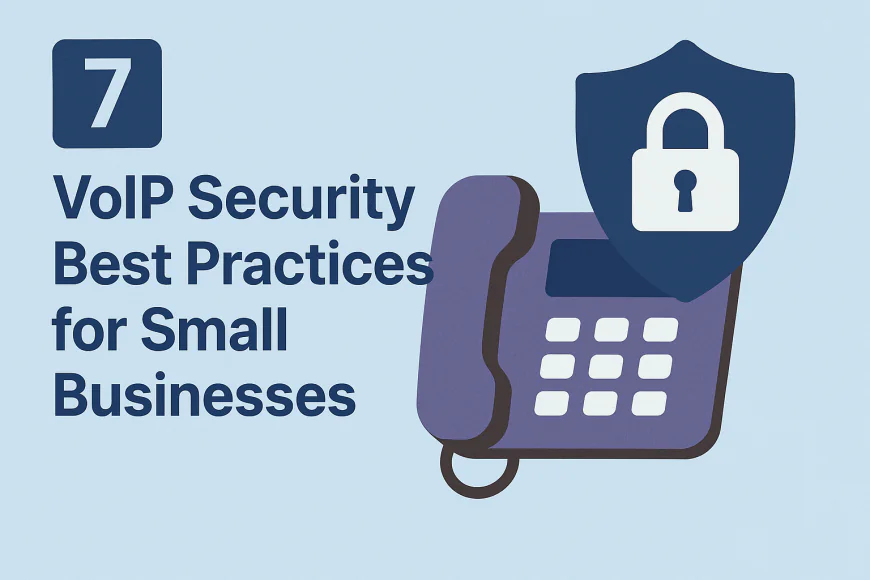
VoIP systems are internet-based, which makes them powerful — but also vulnerable. Without the right security protocols, your business phone system can become a gateway for eavesdropping, fraud, or service disruption. Here’s how to protect your VoIP infrastructure from end to end.
🔐 Why Is VoIP Security Critical for Small Businesses?
Unlike traditional landlines, VoIP transmits data over public networks — which means:
-
Unencrypted calls can be intercepted.
-
Weak authentication can allow unauthorized access.
-
DDoS or SIP attacks can cripple phone systems.
Small businesses are especially at risk because they often lack in-house IT resources to configure and monitor VoIP systems securely.
✅ Use End-to-End Encryption for Voice and Data
Make sure your VoIP provider supports:
-
SRTP (Secure Real-Time Protocol) for encrypted audio streams
-
TLS (Transport Layer Security) to secure SIP signaling
-
Encrypted voicemail and call recordings (at rest and in transit)
Providers like Dialpad, Zoom Phone, and RingCentral offer enterprise-grade encryption by default.
✅ Enable Multi-Factor Authentication (MFA)
Password-only systems are a hacker’s dream. Always enable 2FA or MFA for:
-
Admin dashboards
-
User login portals
-
VoIP app access on mobile or desktop
Even better: use SSO with identity providers like Google Workspace or Microsoft Azure AD for centralized control.
✅ Lock Down Admin Access and IP Whitelisting
Don’t let every user manage system-wide settings.
-
Restrict admin roles to key personnel
-
Use IP whitelisting so only approved networks can access your VoIP console
-
Monitor all admin activity through an audit log
Some platforms, like Nextiva and CloudTalk, offer advanced permission settings and access logging.
✅ Secure Remote Devices: Softphones, Mobile Apps & VPNs
Remote agents increase your attack surface. Best practices include:
-
Require VPN access for remote users
-
Use softphones with TLS/SRTP encryption
-
Disable auto-login on shared devices
-
Enforce strong passcodes and remote-wipe capabilities on mobile apps
If you're using browser-based calling (like Aircall or JustCall), make sure sessions auto-expire and HTTPS is enforced.
✅ Regularly Update Firmware, Apps, and PBX Software
Outdated software is a goldmine for attackers. Keep everything up to date:
-
VoIP desk phones and ATAs
-
PBX systems (Asterisk, 3CX, FreePBX)
-
Desktop/mobile VoIP apps
Enable auto-updates where possible. Patch vulnerabilities fast — especially for open-source PBX setups.
✅ Monitor Call Logs for Suspicious Activity
Proactive monitoring = early detection.
-
Set alerts for call spikes, international dialing, or unusual hours
-
Review call logs weekly for anomalies
-
Enable real-time analytics and usage caps
Platforms like RingCentral, Dialpad, and Zoom Phone offer fraud detection tools built-in.
-
-
8️⃣ Final Checklist — Is VoIP Right for Your Business?
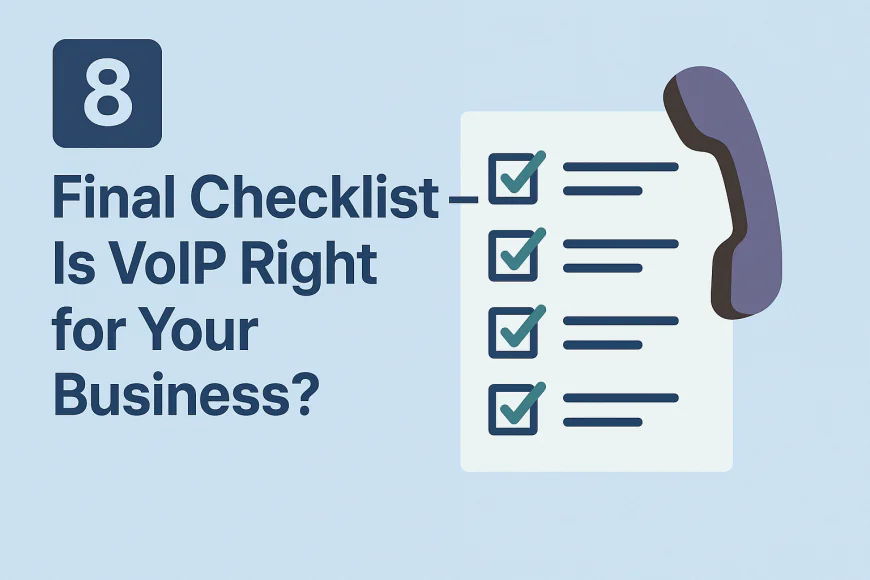
Choosing between VoIP and landline for your call center depends on multiple factors. This checklist will help you decide which technology best fits your specific needs and business goals.
✔️ Business Size and Call Volume
-
Small to medium businesses (SMBs): VoIP is usually the most cost-effective and scalable option.
-
Large enterprises with heavy call volume: Both can work, but VoIP’s flexibility and features often outweigh traditional landlines.
✔️ Budget Considerations
-
Setup and monthly costs: VoIP typically offers lower upfront and operational costs.
-
Long-term savings: VoIP saves money with reduced hardware needs and cheaper international calls.
✔️ Call Quality & Reliability Needs
-
Reliable, consistent call quality: Landlines are inherently stable but VoIP has closed the gap with good broadband and QoS setups.
-
Mission-critical calls: Choose VoIP providers with redundancy, failover, and SLAs to ensure uptime.
✔️ Scalability and Flexibility
-
Plans to scale quickly: VoIP allows easy addition/removal of users and locations without new hardware.
-
Remote or hybrid workforces: VoIP supports mobile apps and softphones ideal for flexible work.
✔️ Security & Compliance
-
Data privacy requirements: VoIP needs robust encryption and security protocols; verify your provider’s compliance (HIPAA, GDPR, PCI DSS).
-
Control over network: Landlines avoid internet vulnerabilities but lack modern security features.
✔️ Integration Needs
-
CRM and software integration: VoIP platforms typically integrate natively with tools like Salesforce, HubSpot, and Zendesk, boosting agent productivity.
-
Legacy system compatibility: Landlines may still be necessary for specific infrastructure setups.
✔️ Future Proofing Your Call Center
-
Technology roadmap: VoIP is evolving fast with AI, analytics, and omnichannel capabilities.
-
Landlines: Mostly legacy tech, with declining support and innovation.
📌 Summary
If you value flexibility, cost savings, scalability, and modern features — VoIP is the clear winner. Landlines only make sense for businesses requiring absolute call stability without internet dependency or for specific legacy needs.
-
-
🔄 Want to Conclude More? Try These

More tests. More answers. Explore these next to conclude smarter.
These handpicked articles help you explore more angles so you can conclude with confidence.
🔄 Need Help Setting Up Your Call Center?
Looking for a comprehensive, step-by-step guide tailored for small businesses? Learn everything you need to get started in:
👉 How to Set Up a Call Center for a Small Business article
🔄 Curious About Virtual Call Centers or Looking for a Remote-First Alternative?
If you're building a call center but prefer a flexible, cloud-based setup, this guide breaks it all down:
👉 What Is a Virtual Call Center? Benefits & Setup Guide
🔁 For Enterprise-Level Needs
Scaling beyond the SMB stage? If you're looking for powerful, enterprise-ready platforms with advanced routing, deep analytics, and global compliance, explore:
👉 10 Best Call Center Phone Systems for Large Enterprises🧩 For Small and Midsize Businesses
Running a small or midsize business? For flexible, cost-effective solutions designed for lean teams, check out:
👉 10 Best Call Center Phone Systems for SMBs
🔄 Need Help Comparing Call Center Software vs Phone Systems?
Not sure which solution is right for you? Get a clear breakdown of features, differences, and use cases in:
👉 Call Center Software vs Phone System: Key Differences
🔄Looking to Supercharge Your Call Center with CRM Tools?
Discover the top integrations that boost efficiency, improve customer experience, and streamline operations in:
👉 Top 10 CRM Integrations Every Call Center Should Use
🔄 Omnichannel vs Multichannel Contact Centers: Still Deciding?
Not sure which communication model fits your business best? Dive deep into real-world use cases, CX impact, and when to scale up in:
👉 Omnichannel vs Multichannel Contact Centers: Key Differences Explained
🔄 Confused About ACD, IVR, and Skills-Based Routing?
If you're not sure how call routing works — or which system your call center really needs — get a clear, jargon-free breakdown in:
👉 Call Routing Explained: ACD vs IVR vs Skills-Based Routing
🔄 Still Using a Landline? Wondering If VoIP Is Worth the Switch?
We break down cost, reliability, scalability, and key call center features in:
👉 VoIP vs Landline: What’s Best for Call Centers? article
🔄 Stuck Between RingCentral, Dialpad, and 8x8?
We compared all three across pricing, features, reliability, and integrations — so you can skip the guesswork and pick the right VoIP for your SMB. Dive into the full breakdown:
👉 RingCentral vs Dialpad vs 8x8: Which VoIP Is Best for SMBs?
🔄 Inbound vs Outbound Call Centers: Not Sure Which You Need?
Discover the core differences, pros and cons, and best-fit tools for each model — so you can set up the right strategy from day one:
👉 Inbound vs Outbound Call Centers: Key Differences + Tools
🔄 Choosing Call Center Software? Don’t Wing It.
Step-by-step guide to choosing the best call center software for your team based on size, features, budget, and use case — expert picks included.
👉 How to Choose the Best-Fit Call Center Software
What's Your Reaction?
 Like
0
Like
0
 Dislike
0
Dislike
0
 Love
0
Love
0
 Funny
0
Funny
0
 Angry
0
Angry
0
 Sad
0
Sad
0
 Wow
0
Wow
0






